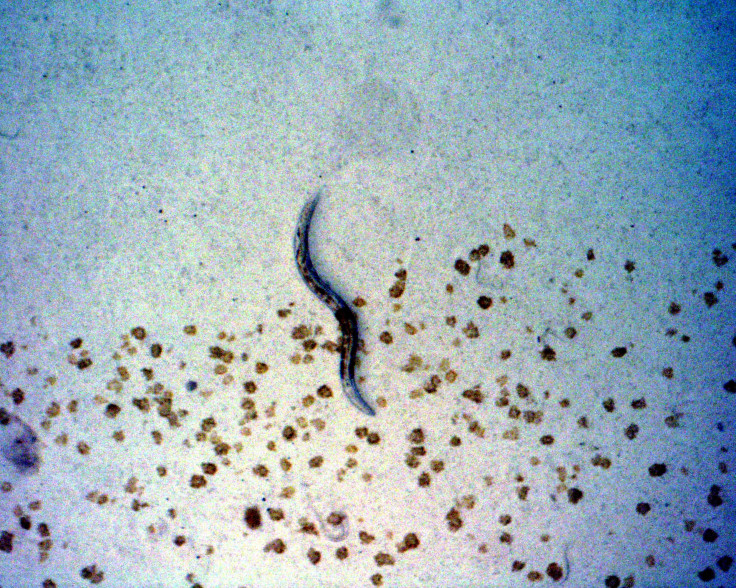Worms In Space? ISS Experiment To Study Muscle Loss In Tiny Creatures

A group of British researchers is planning to send hundreds of roundworms into space as part of an effort to better understand muscle loss during spaceflights.
The worms, known as Caenorhabditis elegans or just C. elegans, will be delivered to the International Space Station (ISS) later this year and will be studied by astronauts in what would be the first-ever United Kingdom-led experiment to take place on the orbiting lab. The project, officially named Molecular Muscle Experiment, will be carried out in collaboration between the UK Space Agency, the European Space Agency and scientists from Exeter, Nottingham and Lancaster University.
As the researchers involved in the project described, the experiment — first of its kind to be carried out on the station — would help them study how microgravity conditions during spaceflight trigger muscle-loss in the tiny creatures.
The work, as they posit, would help them better understand the molecular changes related to muscle loss and develop better treatments to deal with muscle disorders prevailing on Earth, aging-related muscle loss as well as problems faced by astronauts during long-term space missions.
"This research will help us establish the precise molecules that cause muscle problems during spaceflight and enable us to test the effectiveness of novel therapies for preventing the muscle decline associated with spaceflight," Nate Szewczyk from the University of Nottingham said in a statement.
The biological processes occurring in microgravity environments are very different from those on Earth. Various studies have shown spending more than six months in space could lead to as much as 40 percent of muscle loss, and even its deterioration in some cases. In other words, spaceflight makes up an accelerated environment of muscle loss.
Though astronauts’ health-related data provides sufficient information for spaceflight-related muscular changes, not all experiments or treatments can be tried on them. This is exactly where the roundworms come in.
According to the scientists, these transparent critters have the same characteristics as humans and make up excellent tools of research in space. They would suffer from changes in muscles as well as the ability to use energy with time, giving scientists valuable spaceflight-based data to develop better treatments and test novel therapies for humans.
"Worms are, perhaps surprisingly, a very good model for human muscle maintenance,” Tim Etheridge from the University of Exeter added in the statement. “At the molecular level, both structurally and metabolically, they are highly similar to that of humans and from a space flight specific perspective – they provide a lot of practical advantages. They are very small, quick to grow, cheap and easy to maintain. It makes them good to work with."
C. elegans are the first multicellular organisms to have their entire genome mapped. They have been used as a model for research for decades and have also flown to the ISS quite a few times. As part of the latest work, the worms will be sealed in a special gas-permeable plastic bag, which will then be placed in a special incubator for reproducing and growing in space. Once they’ll grow into fully-mature adults, they will be frozen for further tests and studies.
© Copyright IBTimes 2025. All rights reserved.





















